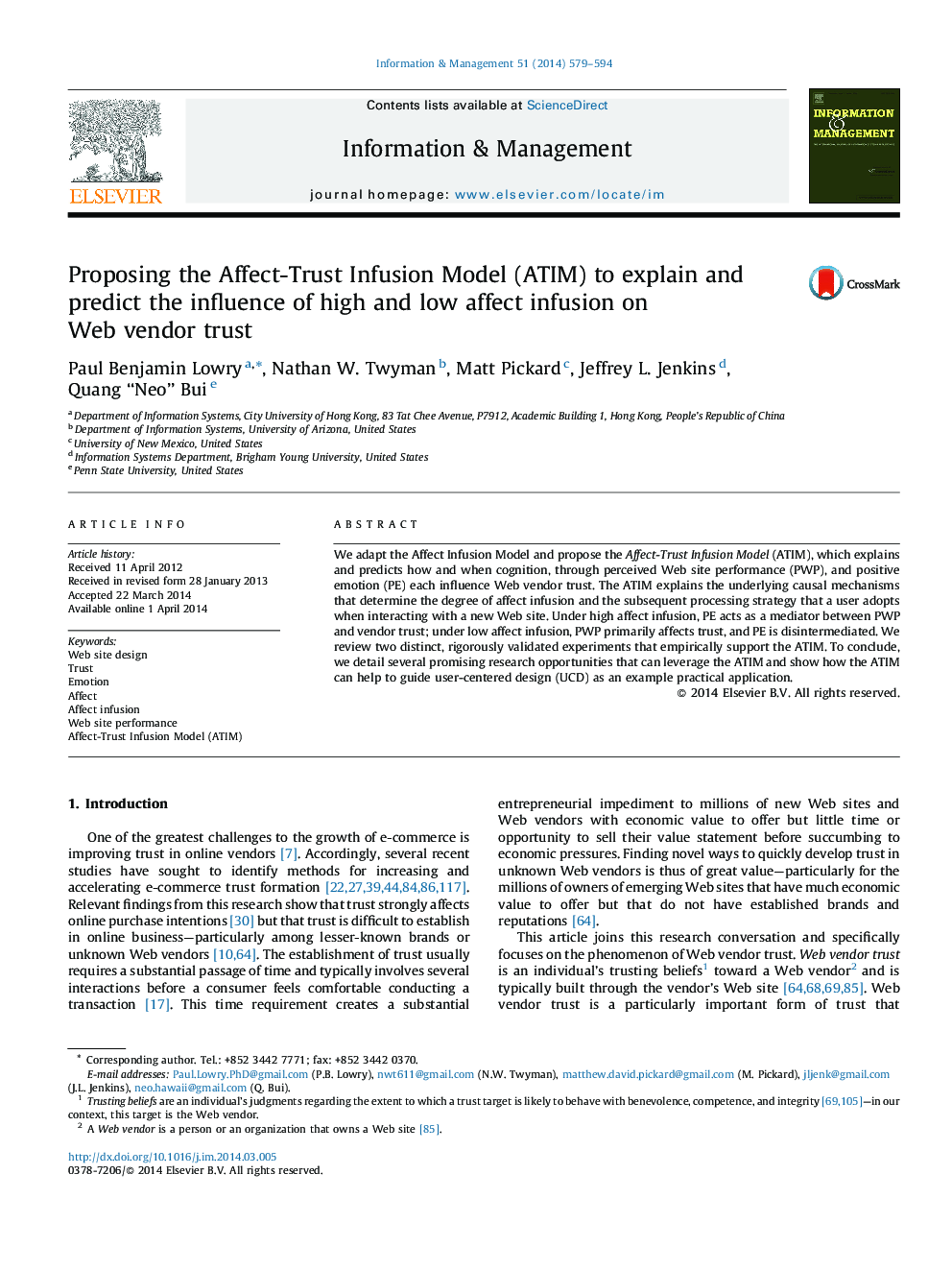| Article ID | Journal | Published Year | Pages | File Type |
|---|---|---|---|---|
| 555568 | Information & Management | 2014 | 16 Pages |
We adapt the Affect Infusion Model and propose the Affect-Trust Infusion Model (ATIM), which explains and predicts how and when cognition, through perceived Web site performance (PWP), and positive emotion (PE) each influence Web vendor trust. The ATIM explains the underlying causal mechanisms that determine the degree of affect infusion and the subsequent processing strategy that a user adopts when interacting with a new Web site. Under high affect infusion, PE acts as a mediator between PWP and vendor trust; under low affect infusion, PWP primarily affects trust, and PE is disintermediated. We review two distinct, rigorously validated experiments that empirically support the ATIM. To conclude, we detail several promising research opportunities that can leverage the ATIM and show how the ATIM can help to guide user-centered design (UCD) as an example practical application.
